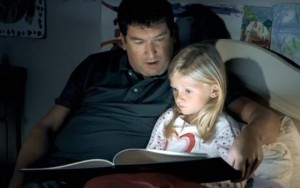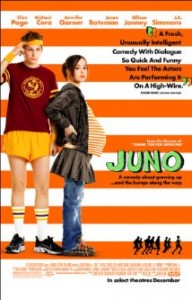Tuesday, March 25, 2014 8:59 pm
In chapter 18, Hirokawa and Gouran describe Functional Perspective on Group decision making through the four functions of effective decision making. The four functions: analysis of the problem, goal setting, identification of alternatives and evaluation of positive and negative characteristics, make up “the requirements for positive group outcomes” (234). These factors are critical to the problem-solving process and must be fulfilled in order to reach a positive group outcome. In the hit TV series, Breaking Bad, Meth kingpins Walter White and Jesse Pinkman, encounter a problem and use the four functions of effective decision making to find a solution. The crew cannot cook without the valuable chemical solution, Methylamine, and their current source of the substance has run out. First, they analyze the problem, discussing how they can no longer use their source because the DEA has caught on and is closely monitoring their source. The goal setting is to find a new source so that they can continue operations without slowing down business or getting caught. The identification of alternatives comes into play when they discuss using an inferior substance rather than methylamine to cook their product, but is ruled out so their only other alternative is to find a new source altogether. Finally, the evaluation of positives and negatives occur when the crew discuss the plausibility of performing a heist on a train, a solution which ultimately turns out to be ideal for the group. Through the four functions, the group successfully analyzes their problem, sets a goal, discusses alternatives and weighs the positive and negative aspects of their solution before proceeding, illustrating perfectly the functional perspective on group decision making.

Tuesday, March 25, 2014 8:53 pm
In this chapter, Bormann presents us with the theory of symbolic convergence which illustrates the way in which the central explanatory principle of sharing group fantasies to create symbolic convergence. Symbolic convergence can be achieved through the concept of dramatization, or “imaginative language by a group member describing past, future, or outside events” (248). An example of the “heightened group cohesiveness-members attracted to each other and sticking together through thick and thin” (252) can be found in the classic movie The Breakfast Club, in which a group of high school students, all examples of different teenage stereotypes, begin sharing their life struggles and slowly become more comfortable with each other. We can see many instances of dramatization occurring within the group as they express their troubles in the past and the worry over their futures. The group comes to realize that despite their different social standings and conceptions of one another, they all share the struggle to survive adolescence and achieve a heightened group cohesiveness that allows them to unite as a group and make it through a long Saturday in detention. The attached scene demonstrates symbolic convergence as the five students are attracted to each other under a common identity and stick together through trying times.
http://www.youtube.com/watch?v=-OMuX561ykM
Tuesday, March 25, 2014 8:53 pm
The Cognitive Dissonance Theory, developed by social psychologist Leon Festinger, illustrates the excessive mental stress and discomfort experienced by an individual when their actions are inconsistent with their actual beliefs. This theory focuses on how we strive for internal consistency; we feel the need to change either belief or behavior when the contrast of the two is pointed out to us. The theory is derived of three basic hypotheses, three mental mechanisms that we use to ensure our actions and attitudes remain consistent: selective exposure, post-decision reassurance, and minimal justification. Selective exposure essentially means that people are likely to avoid information that contributes to cognitive inconsistency because it is incompatible with their own beliefs. An example of this can be found in the movie, Miracle, the true story of the 1980 USA Olympic Hockey team. Prior to the biggest game of their lives, Coach Herb Brooks addresses his team by saying the Russian team might win 9 out of 10 of games between the two teams. The Russian team is more experienced, more talented, and heavily favored to win the gold medal but coach Brooks tells his boys to look past all these notions that contradict their belief that they can win the game. In this example of selective exposure, in order to stay consistent with the attitude that the USA can triumph over Russia, all other differing beliefs are ignored in order to cut down on dissonance.
https://www.youtube.com/watch?v=vwpTj_Z9v-c
Tuesday, March 25, 2014 1:59 pm
Fisher explains that humans are storytellers and that stories are central to our existence. This is seen through Tiana’s journey in the film, The Princess and the Frog. Tiana is a young waitress who becomes a princess and ultimately attains the sugar mill she desired at the end of the film. This story resonates with young females because it tells a tale of perseverance. Another postulate as part of the narrative rationality involves decision-making based on “good reasons.” This is demonstrated through Tiana’s dedication. She works two shifts at two different diners in order to raise money for the old sugar mill. Tiana’s character is also trustworthy and hardworking due to good reasons determined by history, biography, culture and character. She strives to achieve her goals in honor of her father, who died when she was younger. The link attached demonstrates Tiana’s dreams of mobility and attainment of a restaurant. She yearns to build her dreams through building a restaurant, and believes that helping her friend in this scene is the first step in doing so. The Princess and the Frog
Monday, March 24, 2014 5:21 pm
Narrative paradigm is defined as “a theoretical framework that views narrative as the basis of all human communication”. Fisher believes that people are storytellers who interpret life experiences as ongoing stories or narratives, containing conflicts, climax, beginning, middle, and ends. He stresses that all forms of communication that appeals to our reason can be told as stories. People evaluate the persuasiveness of the story by examining the narrative rationality. Narrative rationality can be broken down into two criteria: narrative probability and narrative fidelity. Narrative probability is essentially how well the story fits together or whether this is some type of coherence. Narrative fidelity is how well the story resonates with the audience or how well the audience can relate to the story. The movie, Forrest Gump, demonstrates this theory in several ways. In terms of narrative probability, the story has a clear beginning, middle, and end. The movie begins with Forrest at a bus stop explaining his life story to different people from beginning to end. The story also relates to many people as it explains different times throughout American history. Almost any American could relate to Forrest’s story as it covers decades of American history. Most Americans were involved with one of the events that Forrest explains in his own life story. Here is a clip that demonstrates both key aspects of the theory.
Watergate Scandal
Monday, March 24, 2014 5:23 am
Fisher sees human beings as “narrative beings” (308), where all forms of communication we engage in should be viewed as stories. According to Fisher this is the narrative paradigm, where there is no form of communication that is simply didactic or descriptive. The narrative paradigm requires five assumptions. First, human beings are storytellers. We also make choices guided by good reasons, which depend on the communication genre, situation and media. Third, history, culture, character and biography guide what we see as good reasons. Fourth, narrative rationality results from the fidelity and coherence of our stories. Finally, reality is made up of stories we select to reinvent our lives. I think Disney movies are perfect example of what Fisher describes as narrative paradigm because the character development and storyline in most Disney movies allow us to learn a memorable life lesson. The narrative rationality and coherence of the movies really stick with the audience and make it easy for anyone to relate and remember the overreaching message. For example, the movie “Lilo and Stitch” teaches us that family is not defined by DNA but by who we love. The movie “Mulan” teaches us how the challenges we face make us stronger and who we are supposed to become. These life lessons Disney movies are trying to portray are only possible through the successful storytelling of how the main characters matured and learned from their own life stories.
Monday, March 24, 2014 3:59 am
Narative Paradigm Theory was developed by Walter Fisher. The central concept is that human communication is best conveyed through stories. The key for Fisher is a strong connection established between the storyteller and their audience; without this the story will lose much of its relatability and thus fail to connect powerfully with the listeners. This notion calls to mind the practice of stand-up comedy, where the connection between speaker and audience is of paramount, and the content absolutely must be relatable in order to make the crowd laugh. Kevin Hart does an excellent job of catering to his audience through establishing a grounds for understanding, building up his stories, involving physical comedy through body language and sound effects, and committing fully to his performance every time. His routines are always based around his lived experiences, and those everyday anecdotes are what make him human– connecting all other humans watching to his story.
Here is a clip of Kevin Hart performing:
Kevin Hart- Lies
Monday, March 24, 2014 3:45 am
According to Walter Fisher, narrative paradigm is a theoretical framework that views narrative as the basis of all human communication. He believes that humans are natural storytellers and that we use stories to gain a better understanding of what is trying to be communicated. Fisher states that “narrative rationality is determined by the coherence and fidelity of our stories” (312). This concept reminds me of when parents tell stories to their children before bed. The parents will make sure the story has coherence, or hangs together. This way the child can easily become interested and sometimes imagine as if they are part of the story as one of the characters. The mother or father will also tell their story with a good underlying message or values for their child to learn from. This is when a narrative has fidelity, or the quality of a story that causes the words to strike a responsive chord in the life of the listener. There is usually a good lesson to be learned from these stories.

Monday, March 24, 2014 3:15 am
In daily life people are constantly communicating, yet the actual course of events that occur (stories lived) often differs from the way that the events are related in the story to others (stories told). In his theory on the Narrative Paradigm, Professor Walter Fisher analyzes the way that human beings use storytelling to connect with others, arranging the chronological order and the descriptions of setting in a fashion that will be most meaningful to the listener. In addition, Fisher discusses the importance of nonverbal gestures and signals from the narrator that emphasize a point and appeal to the listener’s sense of logic as well as their morality. When I learned about this theory, I was immediately reminded of Quentin Tarantino’s unique thriller “Reservoir Dogs” because of the way that the setting and the plot timeline interact to create suspense. The entire movie takes place within an unused shipping warehouse, aside from the opening scene which features 7 strangers eating breakfast in a diner and discussing their plan for a bank robbery. They leave the diner confident and happy, but the next scene shows a member of the group with a grievous injury in the back of car, and then quickly moves to the same man entering the warehouse without the wound and accompanied by a few of the members of the original group; flashbacks mix in of the bank robbery going horribly wrong. Although the audience never sees the actions of a member codenamed Mr. Blonde during the robbery, the surviving members Mr. Orange and Mr. White describe his wild killing spree with vivid detail and paint a picture for the audience, embodying Fisher’s Narrative Paradigm. Mr. Orange turns out to be an undercover cop who has been narrating a false character so well that he begins to live that life and faces a moral dilemma in betraying Mr. White, who has befriended and protected him from others who were suspected to be “a rat”. Since Mr. Orange is such a good storyteller and believes in the identity that he has created, Mr. White cannot help but believe in Mr. Orange, despite being both experienced and astute.
Mexican Standoff-Reservoir Dogs
Monday, March 24, 2014 2:43 am
Walter Fisher’s narrative paradigm theory focuses on the idea that all forms of human communication need to be viewed as stories. One very important aspect of Fisher’s theory is that in communicating and telling good stories the communicator must develop a connection with the audience and ensure that they are somehow able to relate. In the movie “Juno”, Juno MacGuff’s (Ellen Page) journey through a teenage pregnancy demonstrates this idea of narrative – symbolic actions, words, or deeds that “have sequence and meaning”. Although the audience may not have experienced this same situation, everyone knows what it is like to be a teenager experiencing stress and uncertainty while feeling pressure from family, classmates etc. Juno connects to the audience in this way and in turn prompts the audience to feel a sense of sympathy and compassion towards her. “Juno” is a classic example of narrative paradigm as the entire film communicates its message through the story of Juno MacGuff’s struggles and triumphs during her unplanned pregnancy, and demonstrates the importance of connection to the audience in order for communication to be successful.






